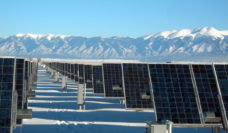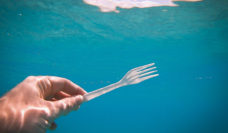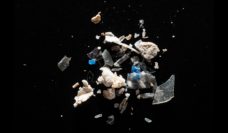Does recycling feel less complicated than it used to? For many US residents, long gone are the days of separating paper, glass, and aluminum. Nowadays, a quick rinse of your takeout container and it’s tossed into your recycling bin atop last week’s newsprint ads and Amazon Prime boxes. This is called single-stream recycling.
The US has largely switched from separating recyclables to single-stream over the past decade, from 22% single-stream in 2005 to 73% in 2014. And why wouldn’t we? Single-stream recycling is easier and cheaper for both residents and cities. It also increases the number of people who recycle and the overall volume of collected material. But is it better for the environment?
The goal of recycling is to reduce landfill waste. The switch to single-stream recycling occurred without us knowing if it successfully diverts more waste from landfills or if collecting everything together causes cross-contamination.
Nurcin Celik and colleagues looked at single-stream recycling in Florida to see what actually happens after collection. They found that 70% of the cardboard and nearly all of the newsprint material was contaminated beyond acceptable standards for recycling, most often ruined by liquid residue, plastic bags, and broken glass. The statewide contamination rate for all materials collected through single-stream recycling in Florida is around 27% compared to only 18% for dual-stream recycling, through which the separate bins prevent cross-contamination.
When a batch of collected material contains a contaminated item, it is difficult to remove; the entirety is sent to a landfill. Across the US, 25% of recyclables end up in landfills. For plastic, that number is over 90%.
The US needs to both dramatically reduce its waste and enhance its domestic recycling infrastructure so we can keep up with all that we dispose of.
Landfills are awful for our health. The toxic waste can contaminate nearby drinking water and contribute to poor air quality. Exposed residents are at increased risk for respiratory disease, certain cancers, and birth defects. Decomposing landfill waste also contributes to carbon emissions, the driving force in climate change. Carbon emissions from landfills account for almost 20% of all emissions in the US, the third largest contributing factor after natural gas and methane from livestock.
Single-stream recycling is also more likely to bring in unwelcome material capable of damaging waste management machinery. Bits of glass and other unrecyclable material can get caught and break the equipment, slowing or stopping the recycling process, resulting in delays and costly repairs.
Our recycling crisis is about to drastically worsen. The US has always lacked the infrastructure to deal with its own waste compared to other countries, sending around 40% of our collected recyclables to China for the past several decades. Then, in 2013, China began cracking down on the importation of contaminated recyclables. China’s initiative, called Operation Green Fence, enforced its strictest regulation yet in 2018. Much more of our recycled material will now be rejected and sent to landfills here in the US. We are increasing our contamination rate by converting to single-stream recycling while simultaneously facing stricter international regulations, creating a recipe for disaster.
The US needs to both dramatically reduce its waste and enhance its domestic recycling infrastructure so we can keep up with all that we dispose of. We can reduce waste by enacting policies that ban material tough to recycle and improve our ability to handle waste through increased government investment in the recycling industry.
The high contamination rates of single-stream recycling have convinced some Florida cities to switch back to separate bins. If single-stream recycling is to remain an option, we need better recycler education and container labeling to prevent cross-contamination. For now, you can do your part by not flattening aluminum cans, cleaning off all food residue, removing all foil and plastic bags, and ensuring there is no broken glass in your single blue bin.
Getty Images














